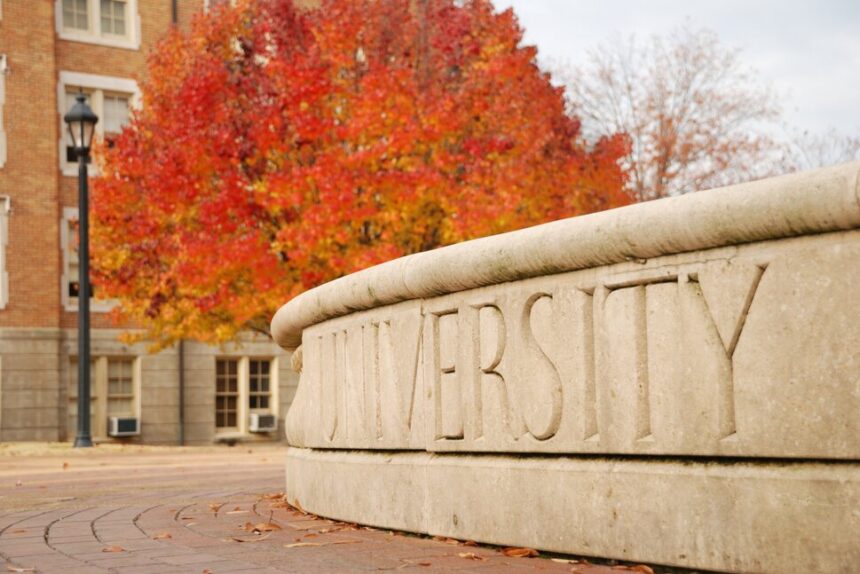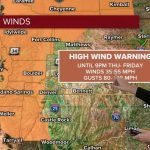In the midst of another year in the rolling crisis that has become a chronic condition for American higher education, it may be time to take a longer view.
That higher education in America is in serious trouble is hardly controversial. Total enrollment in two-year and four-year institutions of higher education peaked in 2010, and it has been tailing off ever since.
Large numbers of Americans appear to have soured on the idea that a college degree is worth the trouble, especially if it comes with a staggering debt load. Meanwhile, to many on the right, colleges and universities have become hotbeds of radical indoctrination rather than education. Facing growing fiscal pressures, more and more colleges and universities have cut back programs and abolished majors. For instance, the University of West Virginia recently announced that it would abolish all of its foreign language programs. “Students interested in learning a new tongue,” as one report put it, “would be pointed to instructional alternatives – such as, possibly, an online app.”
All of those issues are real to varying degrees, including the gradual decline in college enrollment. Yet that decline is only the tip of the iceberg of an even greater enrollment crisis looming. Worse, the nature of the crisis is likely to exacerbate the severe inequality of opportunity that is already a reality in American higher education. It will have little or no effect on America’s elite universities, the Ivies or the flagship state universities. But it could decimate the nation’s two-year community colleges and the second-tier or branch four-year public colleges and universities.
Enrollments are already plummeting at those two types of institutions. Between 2011 and 2021, enrollment at New York State’s public four-year colleges and universities – excluding the four major research universities – dropped by 13%. Since 2011, while enrollment at the University of Michigan and Michigan State, the state’s two flagships, has gone up by more than 14,000, enrollment at the state’s other 13 public universities dropped by nearly four times that amount, or 27%. Enrollment at Iowa’s three four-year public universities has dropped over 13% since 2017.
Community college enrollment has taken a far worse beating. From 2010 to 2020, enrollment at public two-year colleges dropped by 35%, or 2.5 million fewer students. Even in Texas, with its fast-growing population, community college enrollment dropped by nearly a quarter, or nearly 60,000 students, from 2015 to 2022. From all accounts, the numbers would be much worse, except for the fact that more and more community colleges now allow students to take courses while they are still in high school, allowing schools to count those high schoolers in their enrollment numbers. According to Columbia University’s Davis Jenkins, “In rural colleges, it’s often half of their headcount.”
The picture for private colleges and universities – leaving aside the for-profit sector, which is to higher education as the subprime mortgage market is to responsible mortgage lending – is more mixed, but still rife with problems. The number of people trying to get into elite private universities is at an all-time high.
For example, since 2014, the University of Chicago has grown its enrollment by over one-third – and it could grow much faster if it wanted to. Yale and Harvard accept fewer than 1 out of every 20 applicants. However, nationwide, over 100 small, mostly private colleges have closed or merged with other institutions since 2016.
All of this has taken place while the pool of potential college students stayed largely unchanged. The number of 17- and 18-year-olds in the United States in 2020 was almost exactly the same as in 2010. So it isn’t that there are fewer potential students out there. Instead, for a lot of different reasons, going to college – or staying in college – has become much less appealing to a growing number of young Americans, particularly working-class youth.
Enrollment cliff coming. But things are going to get much worse because of America’s demographic trajectory.
Due to a drop in birth rates that began about 15 years ago, by around 2038, the pool of potential college students in the United States will be nearly 25% smaller than it is today. And in all probability, the numbers will keep going down from there. With such a shrinking pool of young people, enrollments are likely to fall off a cliff. Hundreds of small private schools may be failing, and hundreds of second-tier state colleges and universities will be on life support.
Despite the doom and gloom, higher education will not disappear. Colleges and universities are a major part of the U.S. economy and society. As of fall 2023, over 18 million people were studying full- or part-time at American colleges and universities, which employed nearly 4 million people.
Higher education is an economic engine – and often the only economic engine – for hundreds of American communities, from the tiny upstate New York town of Geneseo with its SUNY branch to major cities like Boston or Philadelphia. But with more people questioning not only the value but the meaning of a college education, it is in crisis. And the crisis is just getting started.
It is not as if people in higher education aren’t aware that they have a problem. Their reactions are taking many forms. College marketing has become a multimillion-dollar industry. I know of at least one small Southern public university that has a full-time marketing staff of 11, whose activities have included buying billboard space on the New Jersey Turnpike.
College mergers are increasing, in an effort to cut down on what are widely considered bloated administrative costs. Amid strong public opposition, the Pennsylvania System of Higher Education merged six state universities into two regional universities in 2022, although it has kept all six campuses open, at least for the time being. Gov. Josh Shapiro has recently proposed changes to how higher education is organized in Pennsylvania that, while uncertain, might facilitate future mergers. If I were a gambler, I would not put my money on all six state campuses remaining open for very long.
Schools are cutting programs, particularly in the humanities, that seem to have little appeal to many students, and even less to administrators or government officials looking at the fiscal return on their investment. While schools are actively recruiting international students, that is unlikely to help the schools that need the help most. International students tend to go disproportionately to competitive universities, prompting complaints that they are displacing American students from those institutions. The state of California is planning to penalize California State University branches that fail to meet their enrollment targets, also known as quotas, a step that would appear to be counterproductive.
Some of these reactions to declining enrollment appear to be good ideas, and some not so good, but none are more than short-term adjustments at best – different ways of rearranging the deck chairs. None do more than tinker in trivial ways with what the system of higher education has become.
A path forward. Over the next few decades, we will have to adapt to wrenching change. The time has come to take a more serious look at how we do higher education, and whether the models we’re using, which were mostly designed between the late 19th and the mid-20th century, are still the best way to prepare our young people for a future that is likely to be very different from even the recent past, and to enable them to play meaningful roles as both engaged citizens and productive participants in a rapidly shifting economy – and world.
I don’t have a ready-made blueprint for new models of higher education. But I think they would allow for many more paths into the workforce, including managerial, technical and professional work. Rather than follow the lockstep two-year, four-year or six-plus year model, they would allow for many different timetables, reflecting the true diversity of skills and talents that students have and that the economy will need. They would provide for many combinations of on-campus, in-person and remote learning, reflecting the extent to which technology has advanced and the variety of students’ learning styles.
One thing we learned from the pandemic is that while remote learning doesn’t work for small children, it often works for college students and adult learners. And it’s getting better all the time. These models would allow for truly flexible forms of ongoing education, which despite calls for “lifelong learning,” largely remains an aspiration rather than a reality. More schools are developing tailored online and hybrid programs, such as the nursing program at Simmons College in Boston, where remote students can take courses online and do their clinical placements in their home communities.
Rethinking American higher education is a tall order. Millions of people have a vested interest in maintaining the status quo, while the process of weaning people from their efforts to patch up the existing system and getting them to think about changing the system itself is, to put it mildly, a difficult one.
And yet, a few schools are taking small steps to change the system. The University of Wisconsin is one of a small but growing number of universities that have begun to redesign programs around competencies, rather than individual courses – around learning or mastery, not time. Arizona State has created a series of courses that traditionally excluded students can take to demonstrate their readiness for college. The student pays nothing upfront, but pays only if they successfully complete the course, and qualify for college credit.
This is just the beginning. But far more is needed, because without major changes in how we think about higher education, it is not too much of an exaggeration to say that we could see a quarter of the nation’s 4,000 or so colleges and universities close over the next few decades. And those schools would disproportionately be community colleges and second-tier universities, often the mainstays of small, already-struggling cities, towns and rural areas – precisely the schools that have provided the greatest access to opportunity for first-generation working-class students, immigrants and people of color. The change needs to begin now.











